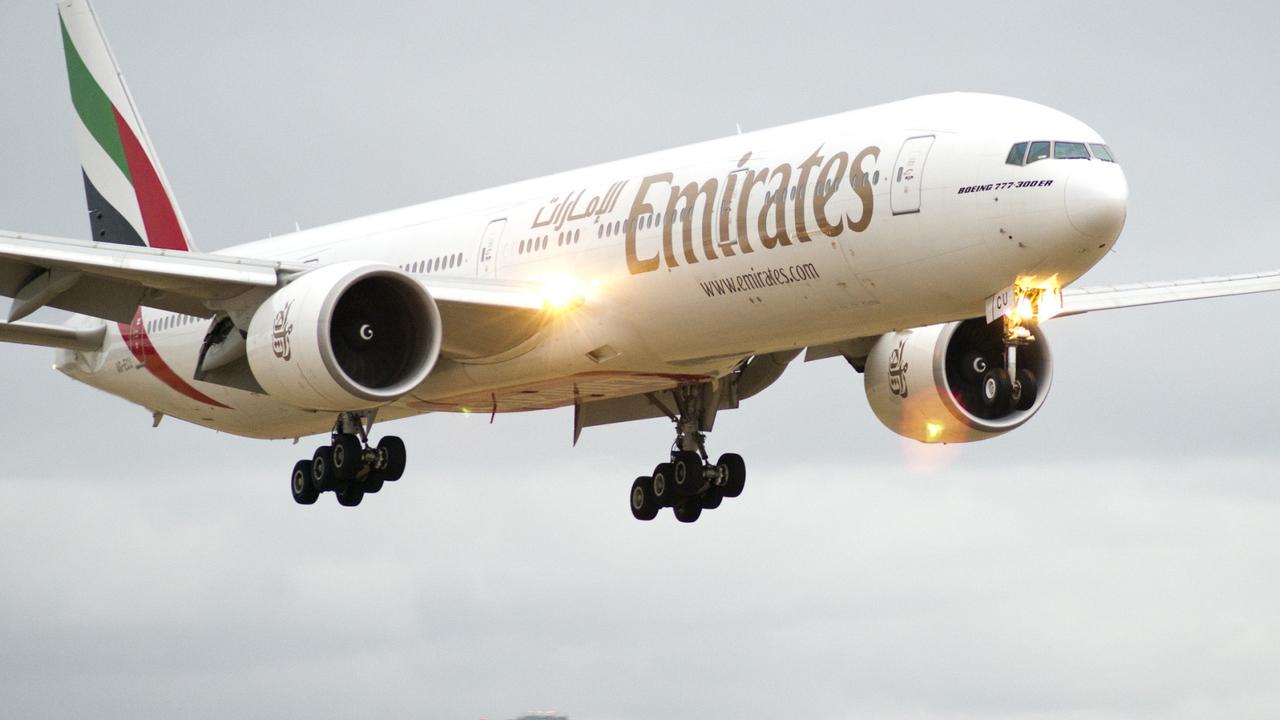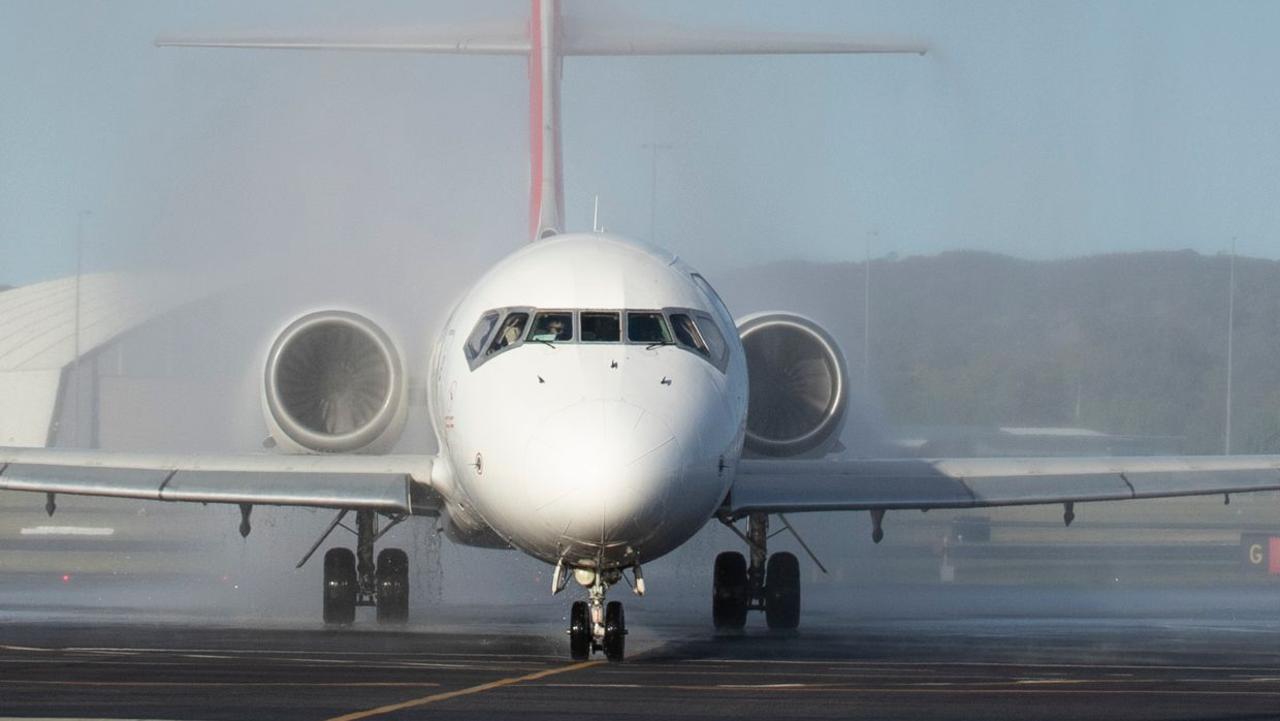Inside the billion-dollar, super-censored in-flight movie industry
HAVE you ever wondered how much thought and effort goes into those movies they show on planes? You may be surprised to learn what really goes on behind the scenes.

IN A small, darkened editing suite with no windows, a man peers into his monitor at the Will Ferrell movie Bewitched.
He’s scanning for the scene with the sausages, so he can edit it out.
He’ll censor any dialogue that mentions sausages and edit the subtitles too.
He works for a company that sells movies to airlines, and this particular customer comes from the Middle East, where pork and its derivatives are taboo.
He’s one link in a long chain that extends from the movie studios through sales agents, onto in-flight distributors and content service providers (CSPs) before hitting that 6x4-inch (15-10 centimetre) seat back screen — and I’m being given a fascinating insight into how this convoluted, billion-dollar, super-censored world works.
The censorship
It’s not surprising that most airlines avoid movies about air disasters. But that censorship extends elsewhere, too.
In-flight movies are subject to some of the most cutthroat censorship policies in the entertainment world, even to the point of editing out competitive airline logos.
Incidents earlier this year shed light on the censorship policies of some countries, when the faces of pigs were blackened out in one Malaysian issue of the International New York Times and the movie The Wolf of Wall Street was censored beyond comprehension in Dubai.
We can be presented with similarly bowdlerised films every time we press play on a plane.
“Depending on which region the airline is from, there will be different tolerances,” says Jovita Toh, CEO at Encore Inflight Limited, a CSP for airlines, based in Hong Kong.
“Europeans are OK with some nudity but cannot tolerate gore and too much violence. The Middle East is strictly against any form of sexual language or bare skin but highly tolerant of violent scenes. Muslim airlines also request all mentions of pig or pork be removed even from the subtitles.
“Singapore is very sensitive to scenes or movies with homosexual content.”
As well as selling movie rights to the airlines, Toh and her company do much of the censoring.
“Other edit points will be plane crashes, logos of other airlines, foul language,” says Toh. “Airlines tend to stay away from horror, sexual, political, religious and terrorist content. We have also changed some gory bloody scenes to black and white to soften the effect.”
Why so sensitive?
“This comes from understanding the demographics of their passengers and analysing passenger usage data over the years,” says Toh.
Carriers desperately want to avoid what happened to United Airlines in February 2013, when a Denver-Baltimore flight was diverted to Chicago after a parent complained of inappropriate content on the communal drop-down screens.
And they’re willing to pay a lot of money to ensure most people are satisfied.
The cost
Some airlines spend up to $US20 ($21) million per year on in-flight entertainment (IFE) content.
The hardware can cost an extra $5.4 million per aircraft. One insider who works for one of the industry’s major CSPs and only spoke only on condition of anonymity, says the amount airlines spent on their entertainment offerings in 2012 hit $3 billion.
That figure is forecast to rise to around $10.7 billion in 2030, he says. I asked whether this money might be better spent on reducing ticket prices — the answer from all airlines I approached was unequivocal: “No.”
We all value our Tom Hanks blockbusters and repeat showings of The Big Bang Theory way too much, apparently.

“On long-haul flights especially, people are sitting for upward of 10 hours. The right movies can certainly help that time go a bit faster,” says Michael Freedman, in-flight entertainment executive producer for Qantas, echoing the views of all the airlines I spoke with.
Big carriers often pay far more for the same movie than smaller carriers.
Cathay Pacific paid $40,400 for a license to show one 2012 movie over a period of two months.
Etihad paid $32,300 for the same movie. Singapore Airlines paid $21,500. China Eastern Airlines paid just $1077.
Many airlines now feature up to 100 movies at one time, when 20 years ago they would carry only 10 or 12. In the United States, airlines pay a fee every time the movie is watched. And IFE systems are heavy too, weighing up to a ton per aircraft. One economics professor in Norway calculated last year that a reduction in weight on a plane of one kilo could result in fuel savings of $3232 per year.
If that’s true, and we assume an IFE system weighs one tonne, then airlines could save $3.2 million, per year, per aircraft, by replacing these legacy systems.
And some are.
New tech
The proliferation of internet-enabled smart phones, tablets and laptops among travellers means many airlines now offer in-flight Wi-Fi, said to be the next big evolutionary leap in IFE.
“Across approximately 15 airlines, there are about 2000 aircraft flying with wireless streaming,” says Robert Smith, director, business performance and market intelligence at IMDC, an IFE research and consulting firm.
Though Qantas has opted to provide iPads on some flights preloaded with content, most Wi-Fi-enabled airlines let passengers supply their own hardware. It’s cheaper and there’s no maintenance required from the airline.
They can then stream content to their devices.
The main problem to date has been speed, but even this won’t be an issue for much longer.
Broadband speeds in the cabin could be commonplace as soon as next year according to some pundits, and that opens up a whole new IFE environment.

New options
As well as allowing flyers to post Facebook posts, tweet and browse their favourite sites, there are IFE money-making opportunities, too.
“In the future, airlines will be able to gain revenue from renting content to passengers, in-flight shopping and in-flight gambling,” says the anonymous source.
Wi-Fi will give existing digital companies even better opportunities.
“Location services, shopping and social networking are all within the existing capabilities of the digital conglomerates,” says Greg Dicum, co-founder and president of MondoWindow in this guest article for Tnooz.com.
“They do these things better than anyone. Once they can reach airline passengers reliably, it would be pointless for airlines to try and compete for mindshare.”
The end?
So does this mean the seat back screen is entering its twilight years?
Not necessarily.
Just over 6000 aircraft in the world offer seat back IFE screens, according to Smith, who adds: “About three billion passenger journeys are made on aeroplanes each year, and of these about 750 million are made on aircraft equipped with in-seat IFE.”
Those kinds of numbers and the fact that for the majority of the time in the air we’re staring at the seat back screen, mean advertisers and others are looking to this as a major sales opportunity.
And who wants to hold a small phone screen in front of their face for two hours, when a bigger seat back screen is right there?
Consider as well the power socket limitations on planes and capacity limitations on personal devices, and you can be sure our man in the dingy editing suite will be searching for sausages, curse words and competitive airline logos for a while yet.
This article was written by CNN and is republished here with permission.



